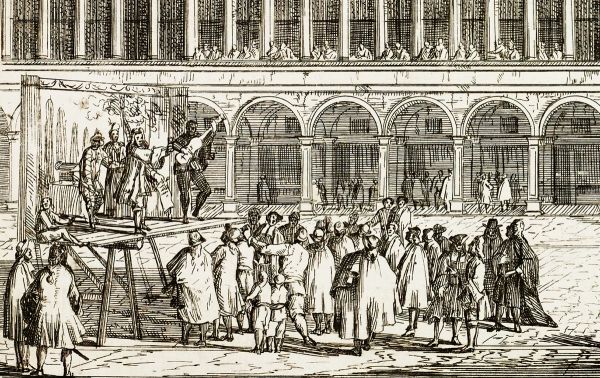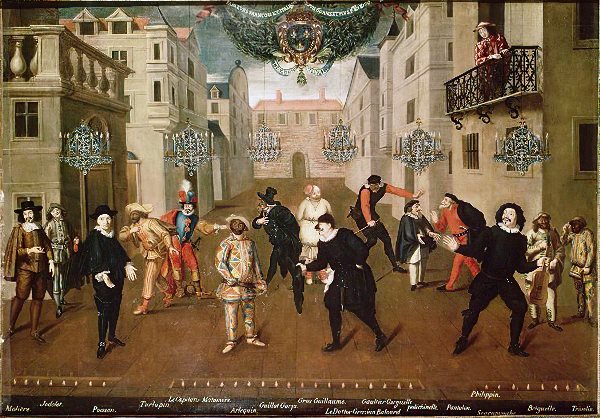

La Commedia dell'Arte literally means "Artistic Comedy", probably named as a contraposition to the standard way of making theater in that period.
It has been renamed in English as "Italian Comedy" probably due to the fact it originates and had its high points in Italy.
The Commedia dell'Arte had its start in the second half of the 16th century, in a period when theater plays were classic, stylish, cold and rigorous.
Maybe as a reaction, here we go for the exact opposite: loud, colorful representations blossomed everywhere in Italy, and the rules of theater are subverted.
The Commedia dell'Arte bases its charm on the free improvisation on stage. Free in the sense it is not codified, but of course it follows very precise rules, and it needs good actors to work. The time of amateur actors who learn by heart the dialogues and repeat them on stage without expression is over.
A very distinct group of actors gives birth to the first nucleus of companies, and start doing their act on simple stages set outdoors, essential backgrounds (usually just a painting of streets and houses made on a canvas).
The powerful mix of various elements gave strong impulse to the initiative: popular themes, complex stories with lots of climaxes, acrobatic jumps and mellow love scenes made it a success.

